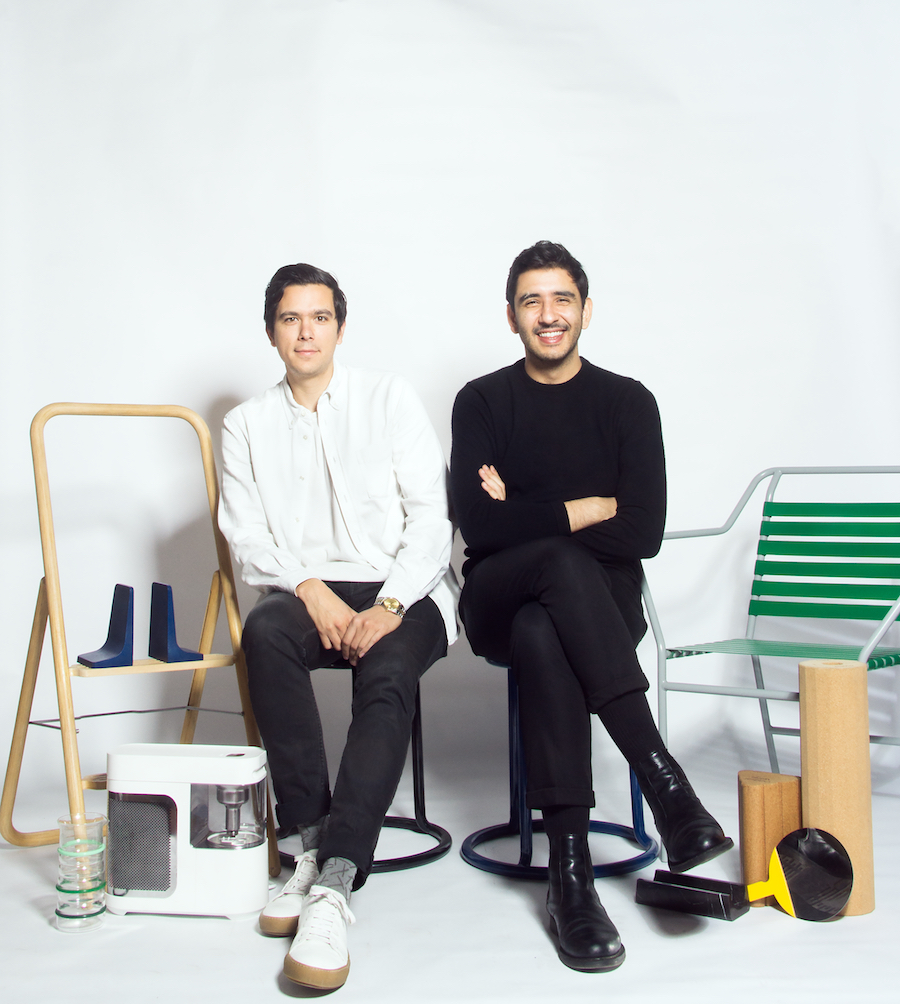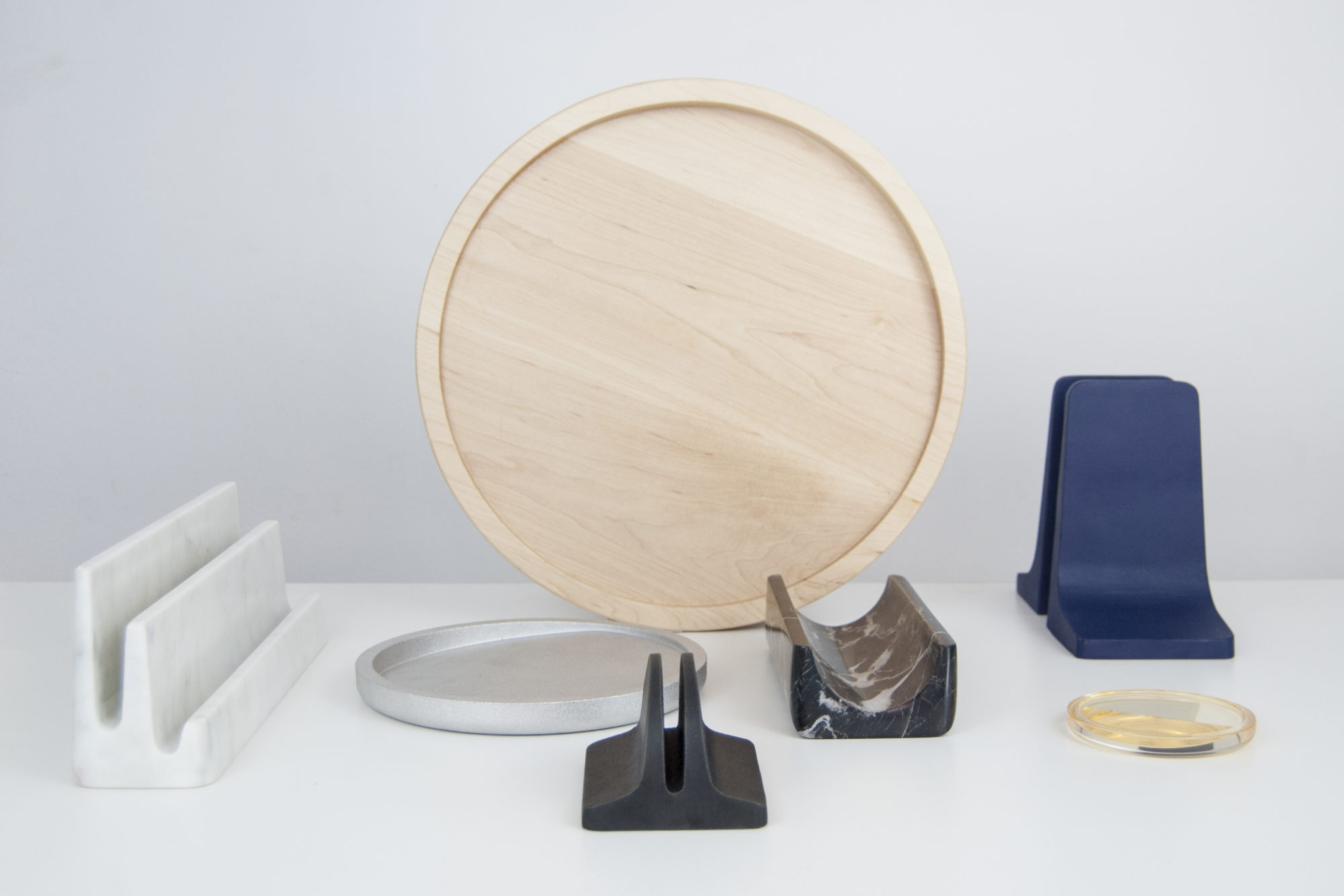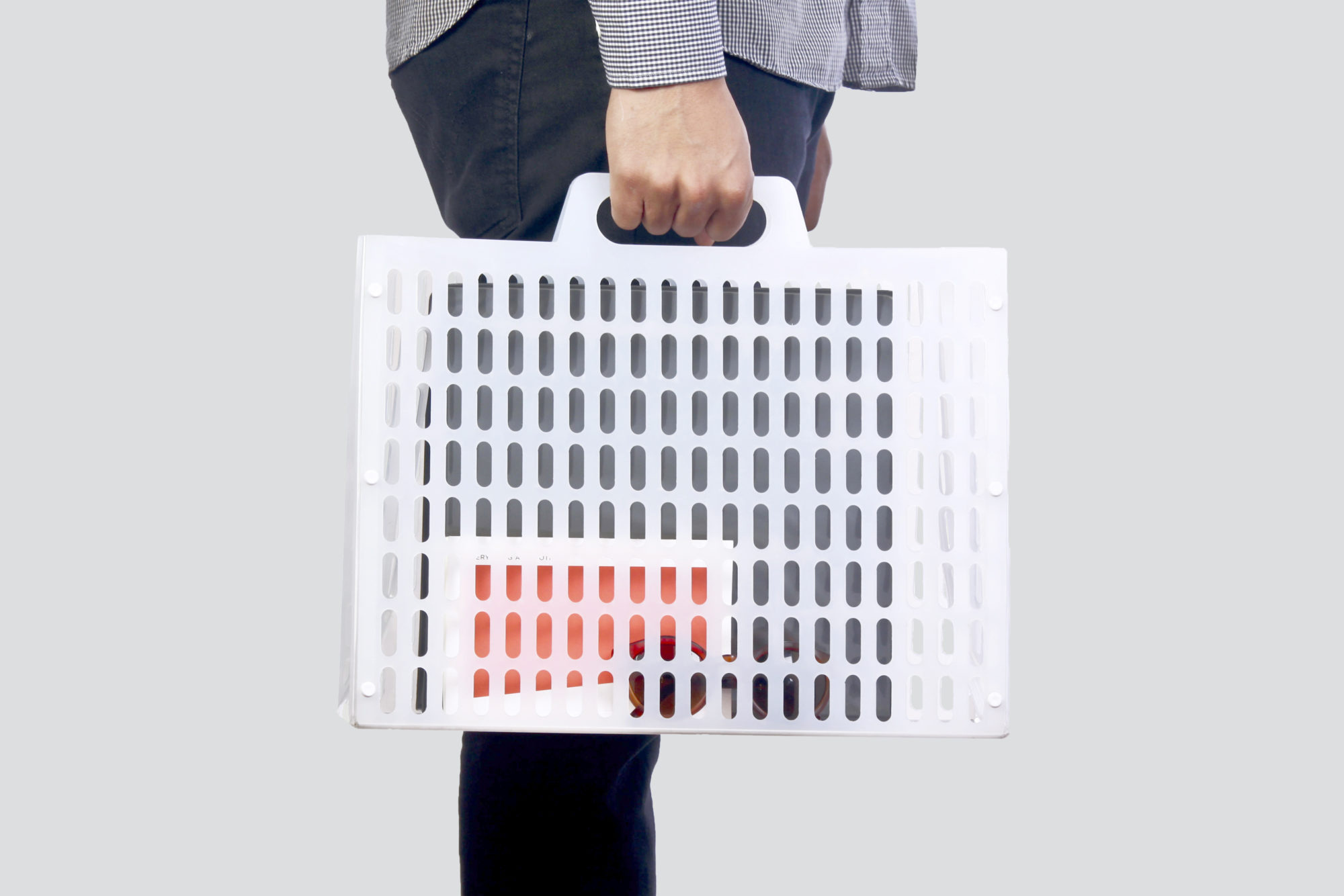Humility seems all but forgotten in the age of the selfie. But for New York–based design firm Visibility, founded in 2012 by soft-spoken 27-year-olds Joseph Guerra and Sina Sohrab, making unflashy objects is their holy grail. The studio’s name—sometimes abbreviated as the flight term VSBY to signal their shared respect for engineering—encapsulates the duo’s definition of good design, which they feel should silently communicate its purpose. “You can make all kinds of statements that are unspoken,” Guerra says. “Starting a design project that wasn’t just about us meant we could focus on design itself.”
The ethos of their work—sculptural everyday objects that exude elegance and energy notwithstanding their simplicity—developed collaboratively from the start. As students at the Rhode Island School of Design, they studied with a small but eclectic cohort: Peers included artists such as Katie Stout, who was developing her playful stuffed chairs as Guerra and Sohrab were perfecting their archetypical seats. They devoured Jasper Morrison’s SuperNormal and Jun’ichirō Tanizaki’s In Praise of Shadows—books that underscored the power of quiet objects and tranquil environments—and realized that their shared idols and goals made for a fruitful partnership. (“We also realized how hard it’d be to go it alone,” Guerra says.)
Both men were reared by families who viewed objects as long-term possessions that were earned, and therefore respected. Born in Iran, Sohrab moved to the U.S. when he was 7; Guerra grew up in L.A. and Atlanta watching his entrepreneur father, a second-generation Mexican American, make purchases in the spirit of doing something meaningful with his hard-earned cash. “Our families attach a lot of sentimental value to objects,” Sohrab says. “When we design things, we hope people have that same kind of connection to them.”



